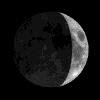Thursday, May 27, 2010
Mainstream Religion a Unifying Thread: Part VI Zoroastrianism
In the last part of the series we discussed Hinduism. Although, the beautiful representations of the universe must be respected, the futility of asceticism cannot be ignored. Today, we will be moving the lens forward in time again—towards Zoroastrianism. Zoroastrianism must be regarded as an important world religion, despite its small numbers and isolated influence. The reason: Zoroastrianism had a huge impact on Abrahamic tradition most notably Christianity.
The concept of a moral and a metaphysical dualism are imports from Zoroastrianism. Yes, the concepts of ‘Good’, ‘ Evil’, ‘Heaven’ and ‘Hell’ manifest themselves in Christianity through Zoroastrian ontology. In Zoroastrianism the dualism between Ahura Mazda and Ahriman, the evil force, are taught. Zoroaster created this dichotomy to better edify his people, but as time progressed, the metaphorical distinction became confusing. When Christianity appeared, these concepts were eventually taken to mean that there exists an anthropomorphic ‘God’ and an anthropomorphic ‘Satan’ who rule over separate and distinct worlds, apart from Earth and our universe. This dualism became deleterious for the religious minded psychology.
Evidence of Zoroastrian influence on Christianity is clear. Scholars point out that the three Magi of the Nativity in Christianity are possibly Zoroastrian. The reason being is that Magi are not of Jewish origin, nor of Greek or Roman—they only appear in Persian and Zoroastrian culture. Furthermore, take a look at the gifts they brought. Frankincense and Myrrh are distinctively Persian. Frankincense comes from a tree that would have only been available on the Arabian peninsula and Persia at the time. In addition, the moral and metaphysical dualism of Christianity are highly evident in both the Canonical and Apocryphal scriptures—even the Gnostic and Essene scriptures. Thus, the connection between the two religions is clear.
The problem: Zoroastrianism and the moral and metaphysical dualism it initiated are very old. Zoroaster is said to have lived in the first century B.C.E. This makes this artistic rendition of the universe and its dark and light qualities nearly three thousand years old! How can the modern religious minded theist, who most likely does not even understand the roots of their tradition, understand the moral and metaphysical dualistic ontology that has been re-done, and re-created over the course of 3000 years?
Subscribe to:
Post Comments (Atom)



No comments:
Post a Comment